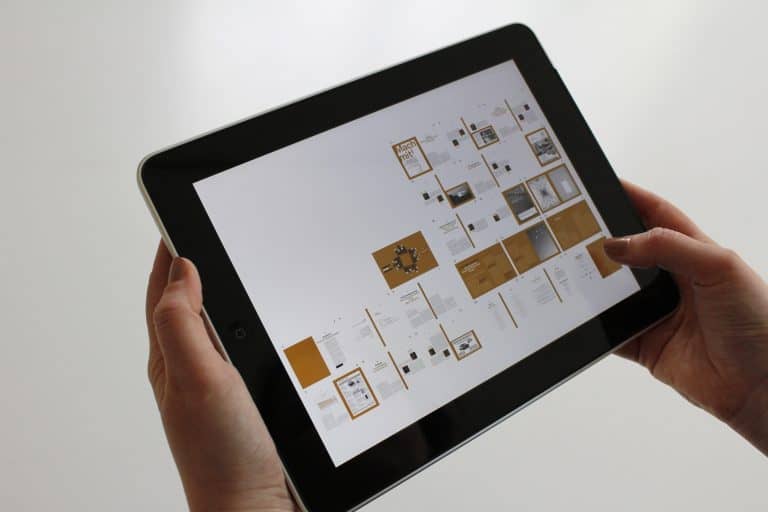Developing a media plan for your company can be a challenge.
There are so many channels available and so many communication strategies you could follow that figuring out what to do can be a real hustle.
Developing a fully-fledged communication campaign should not be too hard.
As long as you are able to break up your strategy into the main areas of content that your brand should develop, you can start seeing things through.
By understanding what channels are available to develop your media plan, you can start building an audience and engage it with a compelling message.
In this post, we’ll be trying to simplify this issue by listing 6 types of communication channels you should consider as you build your brand’s online presence.
With no further ado, let’s dive into the topic.
#1 PR Communications
The first and probably most important component of your media plan is connected to public relations.
Public relations are a division of your business that manages communication relationships with third-party publishers that create and distribute content that relates to your brand.
In other words, we can put it this way.
If on the one hand, a brand can create any type of message directed to its audience, chances are your public may have hesitations to believe anything you say, as you have a vested interest in presenting your own business in the most attractive way possible.
But what if your clients were finding out about your brand by a third-party entity? An influencer? A local newspaper? A reviews website? A friend providing advice?
This latter type of information would be much more convincing and persuasive as your brand can’t control what other people say about you. As a result, PR communications have to do with your reputation. This source of media is extremely influential and valuable to your brand as it builds your brand’s value.
You can’t directly control this information, by you can influence it indirectly through a PR office, which can make sure that third-party entities are well informed on your business and are able to verify the information by connecting to your brand’s PR office.
All in all, PR is an essential component of both your communication strategy and your brands’ positioning strategy.
In this sense, to fully understand the relevance of your PR office we’d advise reading this article, where we explain why the PR office is – according to many- the most important asset for your fashion brand.
#2 Promotions
Promotions are sitting on the other side of the conversion funnel, as this type of communication is not designed to inform and educate your clients, but to trigger customers into purchasing a product by following almost an emotional, instinctual reaction to compelling sales offers.
Promotions are a slippery slope, as they have to be used with care.
Developing promotional messages that ignite your customer’s desire to buy is key to making sure your customers purchase your product at the end of your marketing funnel and all the hard work you’ve done can actually come to fruition.
At the same time, however, if your communication approach is too sales-focused, customers may feel that a brand is not actually trying to help them, as much as trying to profit from them.
Developing the right copy and tone of voice is usually what makes or breaks the effectiveness of this communication typology.
If you’d like to read more about the specific promotions and techniques you can use to incentivize your sales, in this article we discuss the 6 sales promotion strategies that your brand can use to increase revenue.
#3 Partnerships
Partnerships are another typology of earned media that your brand can develop in order to expand on its communication strategy.
Markets are becoming more and more interconnected, as customer demands increase.
Clients do not only want the best product or the most functional one, they want companies to be sustainable and ethical.
A company, however, cannot be a jack of many trades, as its competitive advantage may have nothing to do with environmental or social causes. This is why a company may decide to partner up with another organization to show its efforts to tackle issues that would not be fully equipped to address alone. By doing so the company would show interest in broader social and ethical issues that affect business globally.
Partnerships with environmentally-friendly organizations, labor rights associations, certified sustainable partners can provide that extra validation that customers need to see in order to trust the company.
An example of the types of partnerships your brand can develop is provided by cause-related marketing campaigns, whereby firms are able to connect to a not-for-profit cause or organization to promote social or environmental change. As discussed in this post, this approach can be very beneficial to the community, as well as for your company.
#4 Direct Response
Direct response communications are another form of the bottom-of-the-funnel communication approach. They are advertising communications designed to generate an immediate, almost instinctual reaction from the customer with the intent of generating leads quickly.
Direct response campaigns are similar to promotional campaigns, but usually with an even more urgent message and a compelling call to action which is time-bound.
In this sense, what makes or breaks the effectiveness of this strategy is connected to how compelling the message is and how attractive and aspirational your brand is perceived by your customers.
Direct response communication and direct response advertising are both an art and a science.
If you are able to master advertising communications you’ll find that the right direct response communication approach can impact your revenue in a very significant way.
If you’d like to look at some of the common mistakes to avoid when developing your direct response campaigns, in this article we go over some of the most common mistakes advertisers can make.
#5 Social
Social media presence is a very important component of your strategy as it relates to the middle-of-the-funnel, in your customer journey. In this stage customers are comparing and contrasting alternatives, before deciding what to buy.
Customers may be interested in buying from you, but they may be experiencing some hesitations. Is the product really a good fit? Will it do what it is advertising?
What better way to overcome those hesitations if not by looking on social media for the value that other customers are finding in your products.
As customers look through other people’s reviews and opinions and other customers’ user-generated content they are better able to understand if the product is a good fit for them.
Moreover, as this is also a form of earned media, people tend to trust these socially-shared opinions, as customers are usually more honest and unbiased on social media platforms.
If you’re still unsure whether social media is the right platform for your brand in this post, we’re covering some of the main reasons you should consider when building a social media presence for your brand.
#6 Content Syndication
If a brand had to constantly create content to feed all of these different channels, your company would need a huge communication office to develop videos, posts, and other forms of content to “feed” all of these platforms: from search engines to multiple social media platforms. This is usually referred to as “churn and burn” as the pressure to create new content can take a toll on the quality of your content output.
It’s not a great idea to only focus on creating content for the sake of putting low-value information on the internet.
If there is good content created by other companies, then, it is a good practice to share it and contribute to its diffusion.
This is what content syndication consists of, as the practice of sharing non-proprietary content to your audience.
There are multiple benefits to this approach to communication. Brands or creators who develop great content are able to access a much broader audience, while those who share it avoid creating content that will not perform well, but get to share high-quality content which still provides value to their audience.
All in all, content syndication is part of a strong content marketing strategy. If you’d like to learn more about content marketing, here’s a post that explores the topic in greater depth.
Great, now that we’ve touched upon all 6 components of your integrated media plan, it’s time to draw a few conclusive remarks.
A Great Online Class: Instagram Strategy for Business Growth
If you are interested in learning more about how you can leverage the power of social media to grow your brand, we recommend taking a look at the online class “Instagram Strategy for Business Growth”.
The course is currently under promotion, but you can use the discount code: T_BROWNLEES-PROMO to get an additional 10% discount on your purchase.
This online class offered by Domestika, at a very inexpensive price covers all you need to know to create an effective Instagram strategy that delivers value to your audience and helps you gain reach to your business. If you apply to the course through the link below you’ll be supporting 440 Industries, and we thank you for it!
Conclusions
There you have it! In this post, we’ve explored 6 types of media types that can become part of your communication strategy.
What we always advise doing is keeping in mind your customer’s journey, so that you may be better able to connect to any potential customer, by taking into account where your prospective client is in his\her purchased decision.
By understanding the particular value your communication can add to his\her shopping experience, you’ll be able to create compelling and helpful messages.If you’d like to learn more about media planning for your brand, we recommend the following book to provide a bit more academic backing to the conversion: The Media Handbook (Routledge Communication Series).
Also, do not hesitate to explore our blog, where we’re providing a wealth of material on media strategy and content development.
If you’re interested in learning more about Content Marketing, don’t hesitate to take a look at our course “Content Marketing for Creative Rockstars“. Our short and to-the-point, online class covers a wide range of topics spanning from developing blog posts capable of driving profitable traffic to strategies for getting strong conversion rates on your landing pages. Here’s a link to the course, if you use the discount code BLOG20 you can access a 20% discount. Enjoy!








